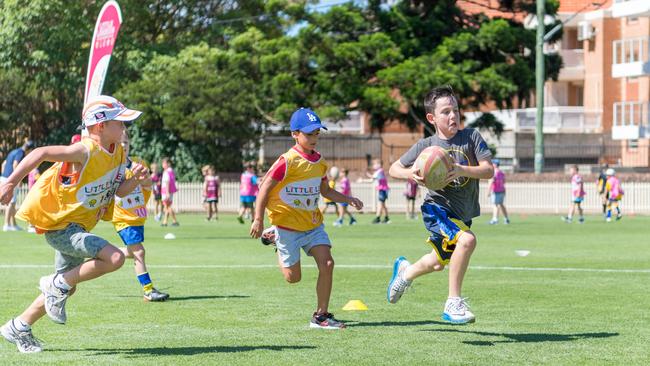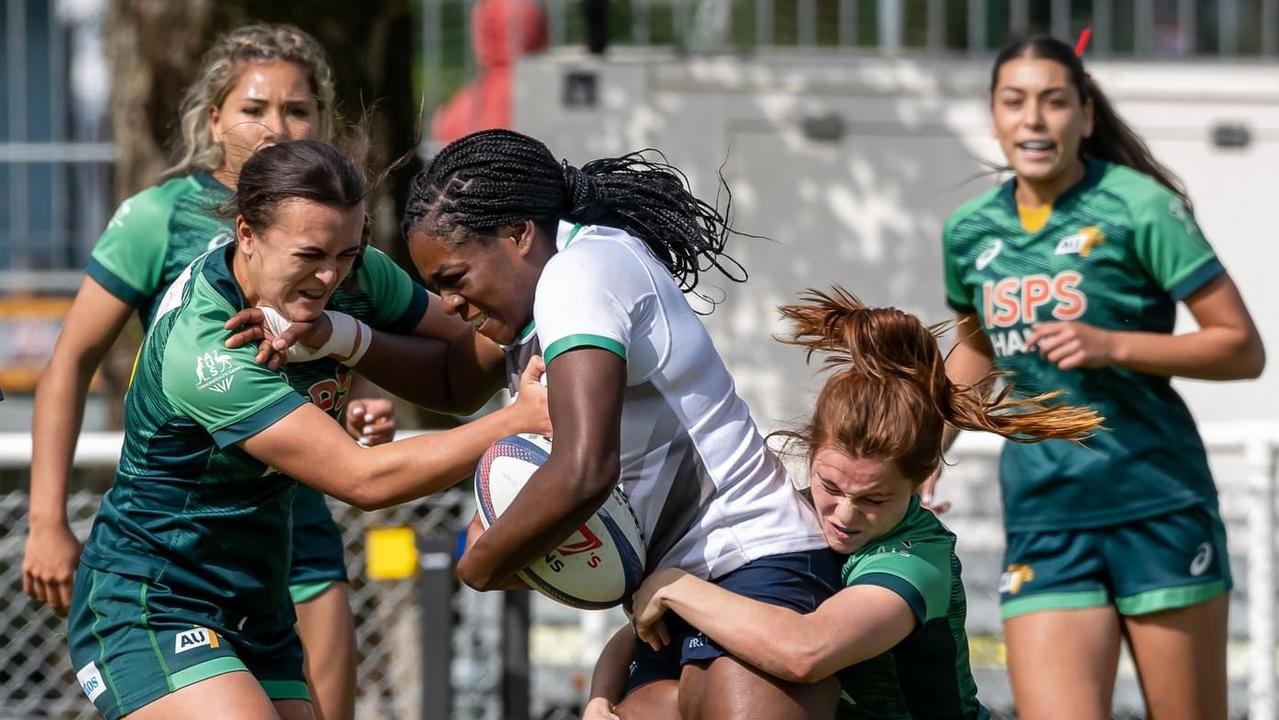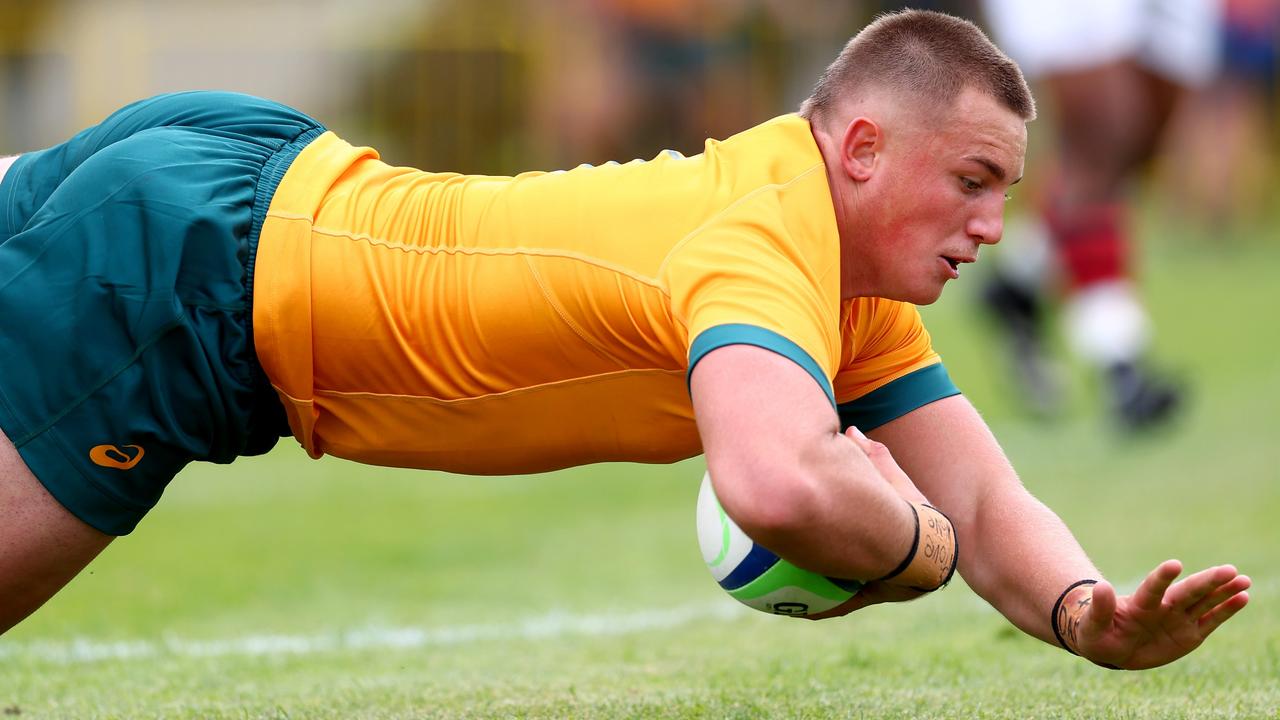Rugby Australia to unveil Size for Age guidelines for junior players
Rugby Australia will today unveil new national guidelines in an effort to keep undersized junior players on the field.

Rugby Australia will today unveil its new national Size for Age guidelines for junior players and all indications are it has taken a vastly more sophisticated approach than merely asking players to step on the scales and then being allocated to a team.
The national body also will introduce its Blue Card concussion management system, which will apply to all competitions — male and female — over which RA has control. That means everything but Test matches and Super Rugby, both of which have their own strict concussion protocols.
Under the new Size for Age policy, individual players from under-10s to under-15s can be moved into a different age group than their actual age following an assessment not just of their weight and height but also of their skill level, playing expertise, fitness and maturity.
Players can be moved down one year from their actual age or up a maximum of two years.
Height and weight will be measured simply to identify “outliers” — those above or below the stipulated requirements. (The precise physical requirements will not be released by RA until after the various state bodies have had a chance to assess them.)
At this point, a mandatory assessment by a qualified, independent coach — 50 are to be appointed nationally until it can be determined precisely what number is needed — will be conducted on those players identified to determine which age bracket would suit them best. But, significantly, factors such as skill and playing ability also will be taken into account, which means that a small but highly-talented player might be permitted to play with his/her natural age group, as indeed might a gentle giant.
Prior to the introduction of these guidelines, there was no standardised approach to mandating the assessment of individual players for size and age dispensation.
South Sydney rugby league club owner and actor Russell Crowe, in a recent column for News Corp newspapers, argued that the “single greatest move that rugby league needs to make right now is to switch all junior competitions to weight, not age”.
The movie star argued that no 11-year-old should be swung through the air by a player twice his or her weight. “It’s unsafe and patently unfair,” Crowe wrote.
Yet a two-year study conducted by RA in partnership with the Sydney Junior Rugby Union, the Brumbies and the Australian Catholic University, found that weight alone was not a strong enough factor to consider moving a player up or down in age groups.
Other factors such as the player’s speed, strength, power, skill and expertise were also central to the assessment.
“Rugby is a game for all shapes and sizes and we don’t want to knock that out of the game,” said Lachlan Clark, head of rugby services for RA.
There is, as well, another key component of rugby. Players play the game because they want to be with their mates. How that plays out could well affect the success of the Size for Age policy.
“There was a range of responses,” said Clark of the children impacted by the policy. “But the kids that moved down enjoyed the experience. What we learnt out of this is the importance of the assessment coaches talking to kids and their parents about what they’ll get out of it. It’s not forever. Kids grow at different rates. If they enjoy it more, they’ll learn different skills. And if you go up, your skills will pick up and you’ll enjoy your rugby. Most of the kids took up the opportunity to try it.
“If they or their competition or their club are not happy with the assessment, there is a possibility for that to be revisited by a secondary review.”
Clark made the point that the policy is being driven by safety considerations, which also goes to the heart of the Blue Card concussion system. Under the system, trialled in 2017, team coaches, managers, medical staff and match officials have the responsibility to remove from the field any player presenting signs or symptoms of concussion.
Just as any player thought to have committed a dangerous act on the field is given a red card — which automatically earns him/her a visit to the judiciary — so any player handed a blue card must consult a doctor and cannot play for a minimum of 19 days.
Meanwhile, the Queensland Minister for the Commonwealth Games, Kate Jones, told a women’s rugby gathering at Parliament House yesterday that she was fully aware that the Sports Minister was in discussion with rugby about the proposed redevelopment of Ballymore. With RA planning to bid for the next Women’s World Cup in 2021, a redeveloped Ballymore would provide an answer to Brisbane’s need for a rectangular ground of smaller capacity than Suncorp Stadium.
“I have regular meetings with the QRU, not only about the facilities but also how we can grow content in Queensland,” Jones said.


